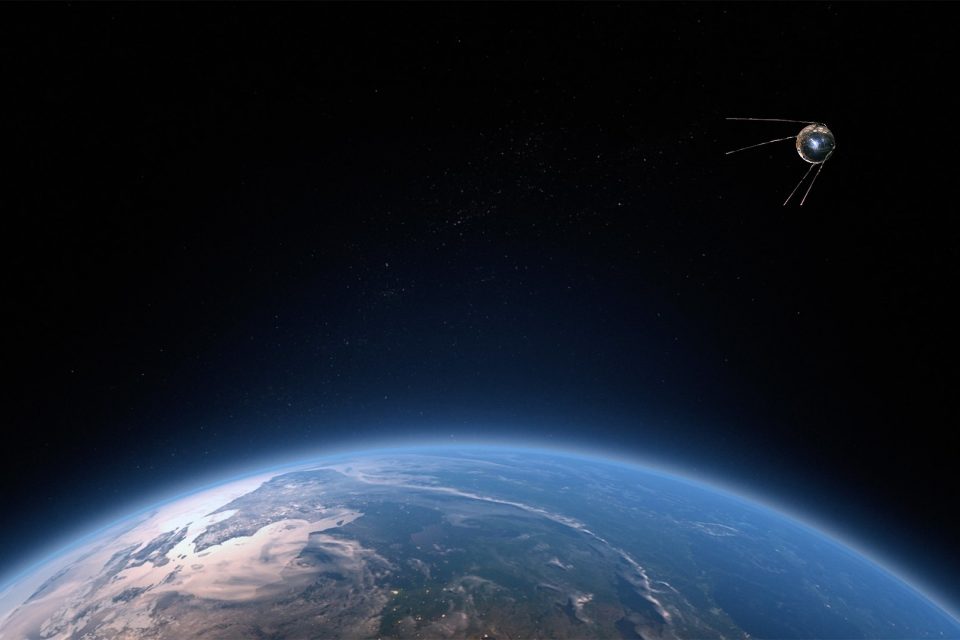
What Is Low Earth Orbit (LEO)?
On July 24th, 1950, the United States launched the first object into space: the “Bumper-WAC.” Over the last 70 years, space agencies from around the world have continued to go to space. Monkies, insects, and dogs all made it to space before humans, finally reaching space ourselves in 1961. As this technology has developed, humans have realized the benefits of objects that are placed in orbit around planet earth. Specifically, agencies like NASA realized the strategic advantage of placing satellites into Low Earth Orbit. Today, let’s better understand: what is low earth orbit?
Defining “Low Earth”
First, we’ll have to tackle a few definitions. Low earth orbit (LEO) is defined by two characteristics. First, an object in LEO has an orbital pattern that is earth-centric. This means that the object itself orbits earth (as opposed to the moon or another planet). Secondly, LEO is defined as having an altitude of less than 2000 km (1200 miles).
Like all objects that orbit the earth (whether in LEO or not), their velocity is important. Think of an orbiting object like a bucket of water. You can swing the bucket of water over your head, and the centripetal force acting on the bucket keeps the water in place (and not on your head). If you swing the bucket slowly enough, though, the water can fall out. Note: this is different from the fictitious force, centrifugal force.
This phenomenon is analogous to what occurs during LEO. Satellites and other objects are constantly falling towards Earth’s surface. But, because they are also moving tangentially (90 degrees) away from that falling path, the object stays in orbit.
[Image by quimono via Pixabay]
Objects in LEO
There are a ton of objects in LEO around planet earth! According to the National Aeronautics and Space Administration (NASA), around the time of the US launch of Apollo 11 to the moon, there were roughly 2,000 objects orbiting the earth in space. As of 2010, there were over 15,000 items in space. Some of these objects are operating satellites. Others are defunct rocket bodies. Some of the objects are just large pieces of space debris. Let’s take a look at some of the most notable objects in space that are currently in LEO.
- The International Space Station (ISS): Launched in 1998, the ISS is a multi-national science project that aims to “enable long-term exploration of space and provide benefits to people on Earth.” Research that takes place aboard the ISS concerns topics like biology & biotechnology, physical & material sciences, technology, Earth & space science, and human research. Periodically, the ISS needs to be “boosted” so that it can maintain a normal orbiting altitude of roughly 400 km (250 miles).
- The Hubble Space Telescope: The Hubble has been in low earth orbit since 1990. Due to its position outside of Earth’s atmosphere, the telescope can collect stunningly high-resolution images of deep space. World-famous images like the Pillars of Creation and the Horsehead Nebula are a product of its unique (for telescopes) position in LEO. Since 1990, five separate repair missions have been launched to the telescope. It is expected to be replaced by the James Webb Telescope. Interestingly, this telescope will not exist in LEO, but will actually be roughly 1 million miles away from earth at a spot dubbed the “Lagrange Point 2.”
[Image by PIRO4D via Pixabay]
Satellites in LEO
- Observatory and Spy Satellites: Some of these satellites exist to take pictures of the earth. Some of these photos are undoubtedly used for civilian purposes like Google Maps. Others are used for… not-so-civilian purposes. All of these satellites have an interesting Catch-22, though. On one hand, satellites further away can capture a larger field of view, but with less resolution. On the other hand, satellites that are closer to Earth can capture a smaller field of view, but in higher resolution. In response to this, some agencies, like SpaceX, are launching 100’s of satellites into LEO.
- Iridium Satellites: You have almost certainly utilized iridium satellites at some point in your life, even without knowing. Launched in the 1990s, this constellation of satellites provides certain types of voice and GPS coverage to providers on earth. Additionally, they are part of the Global Maritime Distress and Safety System (GMDSS), which organizations like the Coast Guard utilize to located distressed boats.
[Image by geralt via Pixabay]
How to Get to LEO
While there may be massive benefits to launching a satellite into LEO, it is not an easy task. The largest hurdle that rockets and satellites face is something called “escape velocity.” This is the absolute minimum velocity that an object must be going to escape the pull of Earth’s gravity. The value of escape velocity on Earth is roughly 11,186 meters/second (21,744 miles per hour). At that speed, you could get from New York to LA in just under 6 minutes! This is extremely important to consider because it costs roughly $10,000 per pound to ship cargo into space.
Check us out on EarthSnap, a free app brought to you by Eric Ralls and Earth.com.















